Traditional village life: England in pictures (Part two)

This is part two of a set of photographs, taken by me over a considerable period of years. It, and its predecessor, has been created to show what rural England has always looked like, unchanging in a changing world, holding on to its traditions and fitting easily into the natural world all around it. This then, is another look at the English village or small town and the people who live there.
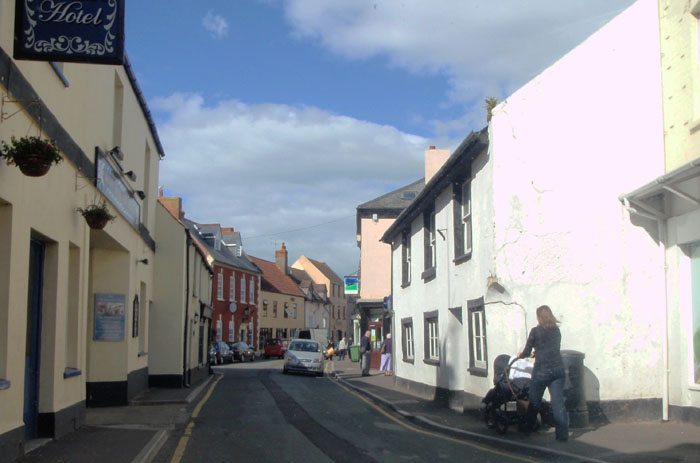
Many of the main highways of England pass through small townships like this one – it’s not freeways as far as the eye can see, and the road has to adjust itself to fit between the houses, as in this photograph. Trucks and other heavy traffic can be noisy at times, but at least there is the advantage for residents, that the road can be crossed very quickly, between traffic!

This is just a funny sign I saw in a shop at Tintagel (reputed home of the legendary King Arthur), this shopkeeper obviously has a relaxed attitude towards trade, and lives his life very much as he wants to!

Iford Manor is in the village of Westwood, Wiltshire. It is an elegant old manor house, hidden deep in a valley, beside a gently running stream. It was built in Georgian times by someone who was wealthy enough to be able to pick the perfect site for their home.
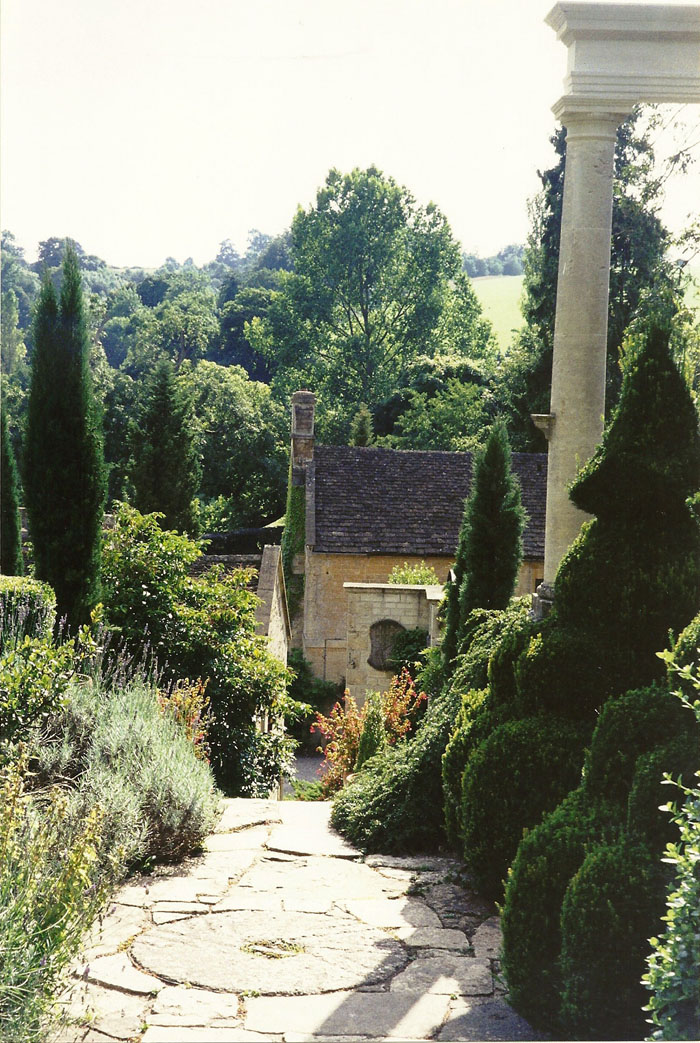
A view of a small part of the beautiful gardens surrounding Iford Manor, the house seen in the previous photograph.
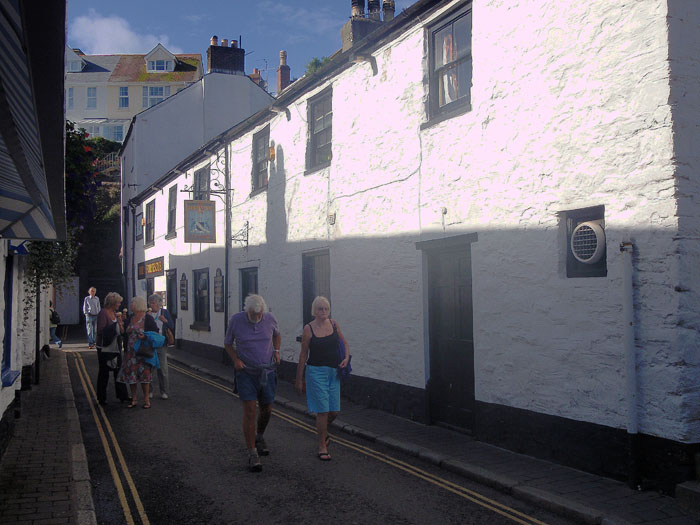
The Fortesque Arms is another of those ancient rural pubs, this one being right on the waterfront in the small South Devon port of Salcombe. Salcombe is a great favourite of the sailing fraternity and the harbour is always crowded with yachts and other small craft. The Fortesque is a popular watering hole for the sailors! I also served in the RAF in this part of the County, sixty years ago – the Fortesque was then popular with the military members of the community!
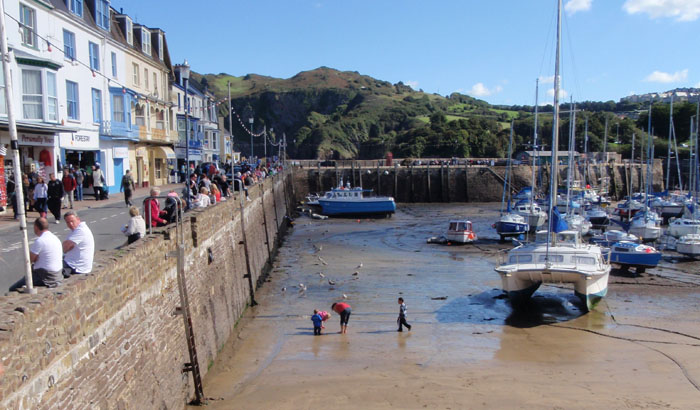
The coast of Devon is liberally dotted with seaside towns, to which the rest of England (or those who can’t afford to travel to Spain) congregate in great numbers every summer. Ilfracombe, on the north coast, is one such town which, now that the professional fishermen have now nearly all gone, relies on the holiday trade to keep going. It still keeps as much as it can of the old town and its environs, because this is part of what the holiday-makers want to see and I hope this photo captures as much as possible of that two-way spirit.
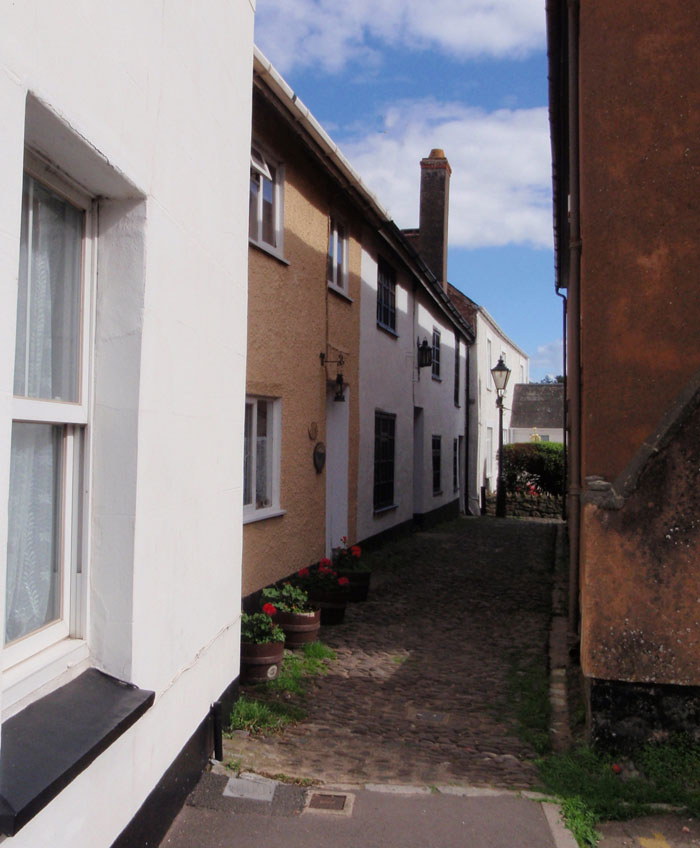
In most small towns and villages the residents of the era when they were built, saw no use in wasting valuable space in the production of wide roads. After all, a busy day then meant perhaps four horse and carts, and maybe a dozen riders passing through, so the houses were built as close together as possible, then you could get more houses in a given space. Of course, this does create some difficulties in the modern world of fast cars and heavy trucks, but most villagers are happy to let things remain as they are!
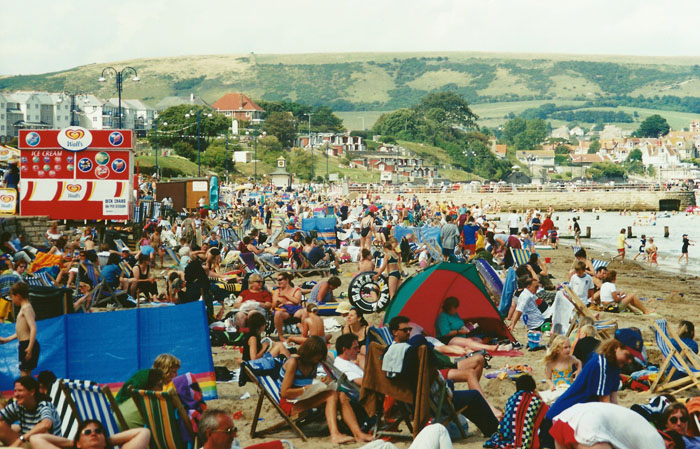
It’s hard for Australians who haven’t visited the UK to envisage just what it is like to go holidaymaking over there. To Australians, a ‘crowded’ beach has a couple of dozen people wandering about on it – in England you can sometimes consider yourself lucky if you can find a patch of unclaimed sand at all! This photo, taken at Swanage in Dorset demonstrates the point admirably, and is pretty well typical of beaches all round the coast in summer.

This is another of those ‘Olde-English’ pubs, found so frequently in rural England. This one, in Salisbury, Wiltshire, is fairly modern, but has been built in the ‘Mock-Tudor’ style to make it look as if it has been there from time immemorial. Still a good pub to get a beer and a meal though!
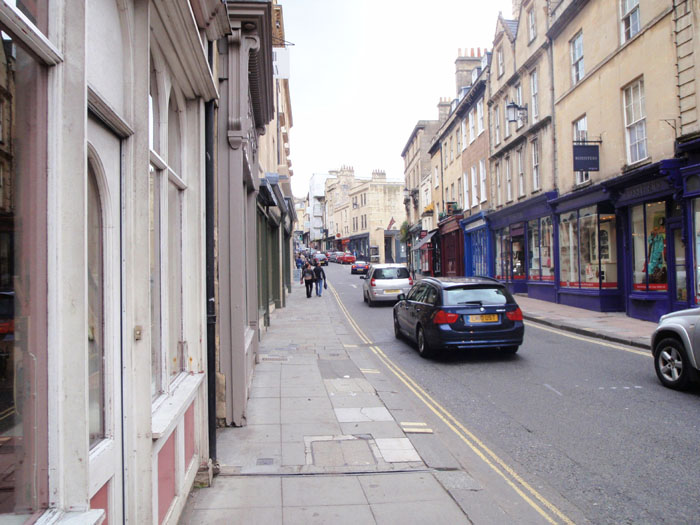
Much of the city of Bath falls between the early Norman and Roman times and the broad vistas of the Georgian period and this is broad Street, which was created right in the ‘in-between’ era, narrow by modern standards, but no doubt very adequate when it was originally made – similar to photo number 18 above.
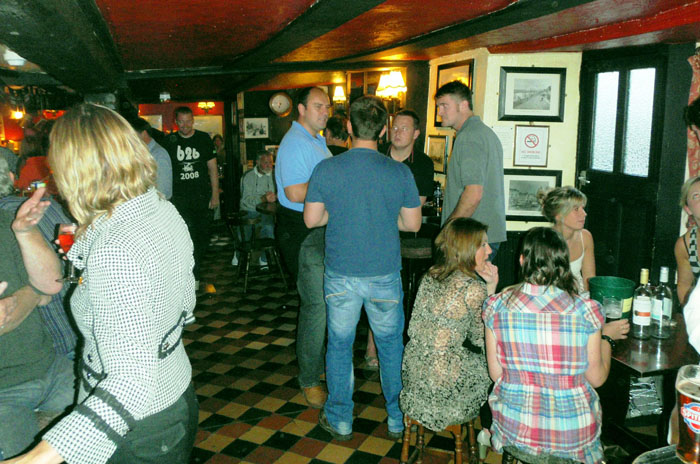
I’ve shown the outsides of several pubs in this collection of photographs, so I thought it only right to reveal what typically goes on inside. Something to wet the lips of any ex-poms reading this, for whom it may bring back memories. The English pub is actually more of a ‘club’ than anything else, especially in the country, where everyone knows everyone else…and their business!

Our daughter and her husband, who still live in the UK, own a yacht which we often go out on when we are over there visiting. This is just a shot of such a trip, with our son-in-law Phil adjusting the rigging, while I steer the ship!

The village of Lacock is famous throughout England, if not the world, as the classic village of by-gone times. The whole place is owned by the English National Trust and thousands go to visit the place each year. The cottages and other buildings are really a joy to look at as can be seen from the tourists admiring them in this photograph – it is perhaps a pity that modern cars are permitted to park there, which can spoil some excellent photo opportunities! At least the old places are still there to be enjoyed, when so much of value around the world has been destroyed to make way for the modern equivalent. To me the amazing thing is the fact that all these old towns and villages were built with planning laws or building permits, yet they created this delightful view. I can’t think of anywhere, governed by modern so-called designers, that comes anywhere near the beauty of these old structures!
And that’s all folks, I hope you enjoyed the little, two-part trip around rural South-West England, which it must be obvious to all, is a favourite part of the Country for me, having grown up there and also being very much a ‘country-boy’ at heart.
What are your favourite parts of rural England? What did you find on your visit/s? Have you got any photos like Brian’s?








 Proudly Australian owned and operated
Proudly Australian owned and operated